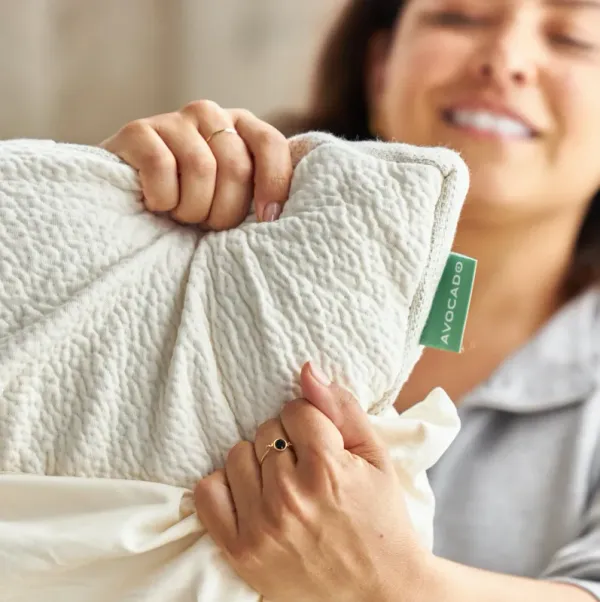You're on the list
By signing up, you agree to receive email marketing.
























Your sheets and pillowcases play a vital role in ensuring you get the best rest each night. Learn how to choose the best sheets and pillowcases for your sleeping preferences.
To outfit your bed, you need a fitted sheet that encompasses the top and sides of the mattress, a freestanding top layer that goes over your body, and pillowcases. There are many different types of fabrics, weaves, and thread counts to suit your sleeping preferences.
Sheets and pillowcases come in cotton, linen, flannel, silk, and more material types. These fabrics keep you comfortable and moderate body temperature.
The material you choose will vary based on personal preference. If you get hot while you sleep, consider a fabric that wicks away heat and moisture. Sensitive sleepers want an allergen-free material to help keep their skin free from irritants.
These factors influence the material type to help you find maximum comfort. Here are some popular fabrics:
The thread count (the number of threads woven into one square inch of fabric) determines comfort and durability. It's also one of the most important things to consider when choosing the right bedding:
200-400: You'll get a balance of softness and breathability with thread counts between 200 and 400. Linens in this range are typically more affordable and suitable for everyday use.
400-600: With a higher thread count, your sheets and pillowcases will feel noticeably softer and more durable. Anything in this range is ideal for a luxurious feel without linens getting too thick or heavy.
600+: Anything over 600 is for ultra-luxury linens. Since these thread counts will feel denser and less breathable, they're not recommended for hotter climates or for daily use.
Proper care and maintenance will extend the life of your linens. Here are some tips on how to clean bedding like a pro:
Use only mild detergents: Avoid chlorine (bleach) or harsh chemicals to prevent linens from losing color.
Avoid hot water: Wash linens with cold, tepid, or lukewarm water (anything below 104°F / 40°C), as high temperatures can damage the integrity of the fabric.
Dry with low impact: When air-drying isn't an option, tumble dry your sheets on a low setting. Taking them out when they're slightly damp can also help prevent wrinkles.
Rotate regularly: Switch your sheets regularly to reduce wear and extend their life. You'll need at least two complete sets of linens to alternate between.
Keep them cool and dry: Store bedding and sheets in a cool, dry place away from direct sunlight.
Carefully read labels: Some fabrics come with precise instructions, so check all labels before washing linens for the first time.
Knowing when to replace fabrics depends on their material, how you used them, and whether they saw proper care. Inspect your linens regularly for thinning fabric, fading colors, or fraying edges to ensure they don't lose their sheen or softness.
To have a general idea, you'll need to replace sheets and pillowcases every two to three years, depending on the above factors. If linens start to grate, itch, or feel uncomfortable, it's also a good sign they're at the end of their life.
You're on the list
By signing up, you agree to receive email marketing.